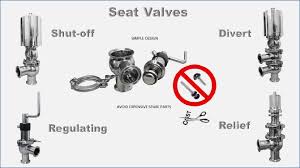How to choose the valve in the valve application materials
According to the conditions of use, the design of cryogenic valve has the following requirements:
1) the valve should have the ability to work long hours in low temperature medium and ambient temperature.
2) the valve should not be a significant heat source of the cryogenic system. This is because the inflow of heat in addition to lowering the thermal efficiency, such as excessive inflow, but also the rapid evaporation of the internal fluid, resulting in abnormal pressure, causing danger.
3) low temperature media should not have harmful effects on the operation of the handwheel and the sealing performance of the packing.
4 direct contact with low temperature medium valve assembly should have explosion-proof and fireproof structure.
5 low temperature work of the valve assembly can not be lubricated, so it is necessary to take structural measures to prevent friction parts abrasions.

Low temperature valve material: the main material selection factors should be considered from the metallurgical considerations, metal materials in addition to face centered cubic lattice of the austenitic steel, copper, aluminum, mild steel will appear low temperature brittleness at low temperature, thereby reducing the strength and service life of the valve. Selecting the main material, we must first choose to work at low temperature materials.
Aluminum does not appear in the low temperature low temperature brittleness, but because the aluminum and Aluminum Alloy hardness is not high, aluminum sealing surface wear, abrasion resistant performance is poor, so the use of low-temperature valves have certain limitations, using only low and small caliber valve.
The low temperature performance of the material at low temperature is mainly to ensure the cold impact strength. The inner part of the sanitary ball valve must be properly selected to make it have enough cold impact strength to prevent breakage. C and Cr alloy steel under from-20 DEG soon lose the impact strength, so the use of temperature limit at -30 DEG C and -50 C. The content of Ni of 3.5% nickel steel can be used to -100 DEG C, Ni content of 9% nickel steel can be used to -192 degrees. Austenitic stainless steel, nickel, Monel, titanium, bronze and Aluminum Alloy can be used to lower the temperature (-273 C).

In addition, low-temperature sanitary valve material selection should also consider the following factors:
A minimum operating temperature;
The mechanical properties of metal materials under low temperature conditions, especially impact toughness, relative elongation and microstructure stability;
C. in the low temperature and no oil lubrication, good abrasion resistance;
D. has good corrosion resistance;
The welding properties of the material should be considered.
(2) the valve body, valve cover, valve seat, valve (gate) material selection, principles of selecting these main components of materials is roughly: temperature higher than -100 DEG C with ferritic steel; temperature is lower than -100 DEG C when the use of austenitic steel; low and small caliber valve can be used such as copper and aluminum materials. Select the appropriate material according to the lowest operating temperature.
(3) when the temperature of the valve stem and the fastener material is higher than -100 DEG C, the stem and bolt materials are made of Ni, Cr-Mo and other alloy steel, and the proper heat treatment is adopted to improve the tensile strength and prevent the thread from being bitten.
But acid resistant steel hardness is low, it will cause the stem and packing each other abrasions, resulting in leakage of filler. Therefore, the stem surface must be hard chromium plating (coating thickness of 0.04-0.06mm), or nitriding and nickel phosphorus treatment, in order to improve the surface hardness. In order to prevent the nuts and bolts to kill, nuts generally use Mo steel or Ni steel, while on the surface of the surface coated with molybdenum disulfide. It is also worth noting that the low temperature valve gasket, packing materials.